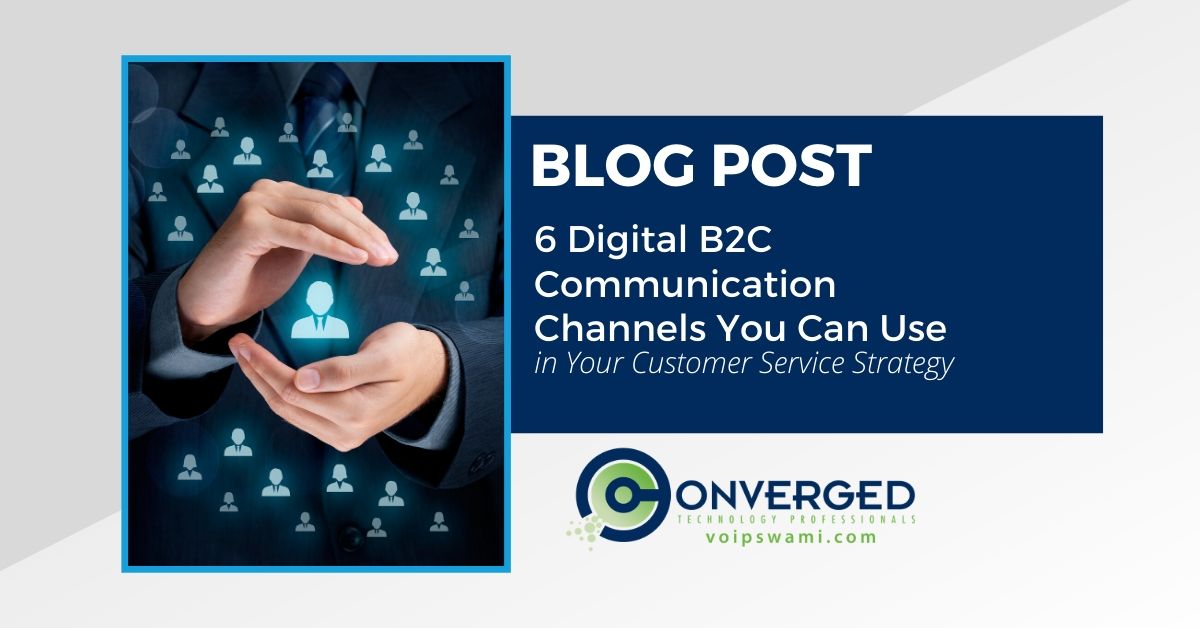
The B2C market is entering an age of omni-digital customer service, well... no… correction…. we have already entered into an age of omni-digital customer service.
Although the consumer may not recognize it for what it is, successful businesses are continually modernizing their customer service strategies to stay one pace ahead of the competition.
They understand that to service their customers it is no longer simply about offering multiple digital channels to communicate with consumers. It’s now about providing customer service operations the ability to view and track all those digital communications under one visible customer profile account.
This omni-digital customer service strategy improves overall communication, engagement, and experiences between both your customer service team/department and the consumer.
Will the average customer really care to hear about your amazing customer service strategy? No.
Will the customer benefit from the strategy? Absolutely.
Will you benefit from the strategy? Absolutely.
Examples of B2C Digital Channels for a Customer Service Strategy
Let’s explore what some of these digital channels are so you can start thinking which ones may be best suited for your own customer service strategy.
1. Text messaging
Text messaging, also known as SMS, is one of the most common B2C digital channels used to communicate quickly and efficiently. Here are some ways you may have seen businesses communicate using this channel:
- Reminder for upcoming scheduled doctor’s appointment
- Promotional text for upcoming deals or promos
- Shipping delivery confirmation
- Payment due reminders
- Follow up messages about abandoned application forms
- Chats with customer service agents
The downside to text messaging is that it can only be received on the mobile device associated with the phone number where the text is being sent.
2. Email
Yes, email is still a common way for businesses to communicate with customers. The benefit for Email is that it is accessible through multiple devises. Unlike SMS which is received only on a mobile device, email can be viewed on a desktop or mobile device, making it less likely to be missed or accidentally trashed.
However, due to high spam filters, legitimate emails can be mistakenly marked as spam by the email provider or email spam filter and moved to the spam or junk folder.
It’s important when using email to communicate with customers, that they make sure your emails are not marked by spam.
Similar to text messaging, email can also be used for some of the same notifications mentioned above but other examples include receiving transcripts of web chat messages with customer service agents, follow-up emails from phone support inquiries, or refund confirmations after completing refund forms online.
Remember, with an omni-digital strategy, all these communications are visible through a single platform! More on that later, let's get to our third example.
3. In-app Messaging
In-app messaging is used when messages are sent to your consumer through a business’s mobile app, not via the default text messaging app on a mobile device.
For example, customers who install an app from their favorite kitchenware store may get alerts about upcoming sales or suggestions for complimentary items. Likewise, other applications such as Waze, will send alerts about traffic conditions… through their own app.
Here is an example from Macy’s offering app users special discounts and sales below. While this shows a marketing offer, the app itself is an example of the power and influence a business app can have to keep customers engaged.
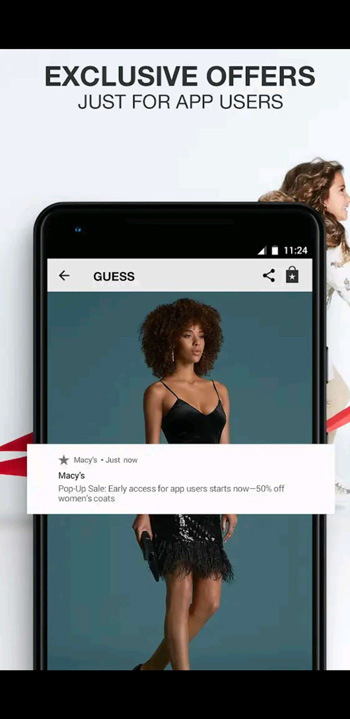
If your business has an app that is installed on a consumer’s mobile device, there are many creative ways your marketing, sales, and customer service teams can utilize this unique digital channel to improve engagement and provide a solid customer service experience.
4. Social Media Applications
Another common digital channel used by a business, especially those in the retail sector, is social media.
If you’re a business that deals directly with consumers, odds are you have multiple social media business accounts for your online marketing. Here are the most common social media platforms that B2C businesses use:
- Facebook
- Facebook Messenger
- Twitter
- WhatsApp
- Instagram
- YouTube
- Pinterest
Regardless of which platform your business uses, this method will only work if your customer is connected by becoming a follower, or if you use paid sponsored ads.
For example, sports teams that use these social channels often engage their supporters with fun-spirited messages, game results, behind the scenes photos, and links to interviews or video. Food companies will use social media to share recipes that use their products, or perhaps they share current deals and coupons with followers.
Using social media to address consumer questions and engage with them at the customer service level, you’ll see how integral this particular digital channel can be in your overall strategy.
Here's an example of a social media account for a (fictitious) Instagram business named Jaspers Market. While this is used for marketing, you can see there are also options for sending messages, calling, and getting directions... all of which involve customer service communications.
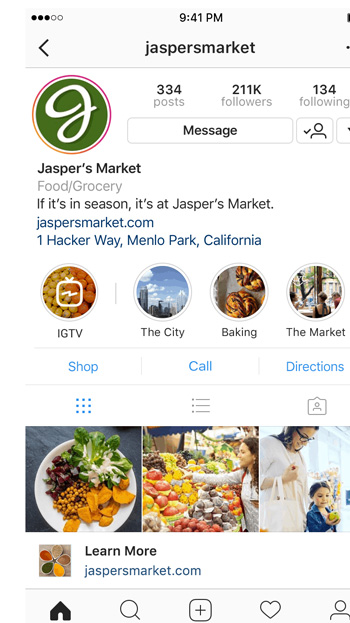
Likewise, most platforms if not all, will offer an option for sponsored ads that are geared to grow their subscriber base. When done properly, these social media ads can be extremely effective for gaining new followers that fit the demographic profile of their target audience.
5. GoogleMyBusiness
GoogleMyBusiness (GMB) offers businesses multiple ways to have an online presence, but they also offer ways to interact with your customers directly. GMB listings are prominently displayed in the search engine results for both mobile and desktop platforms when users search for your business online.
With GMB, you can have your own website, use call tracking, messaging, and reviews.
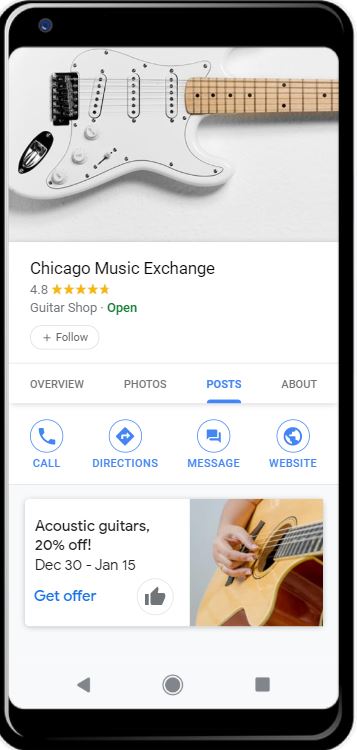
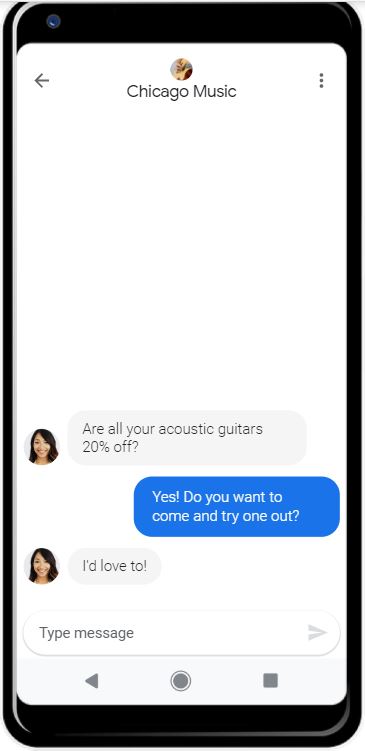
However, with omni-digital capabilities you can integrate with GMB and communicate directly with your reviewers, enable quick and efficient response times to those who have commented, whether positive or negative.
6. Live Web Chat
As a consumer you either love website chat bots or you hate them. When used properly however, businesses can benefit greatly by offering a convenient channel of communication through live chat applications that are incorporated into your business website.
Here's an example of the chatbox that will appear when you visit RingCentral's website:
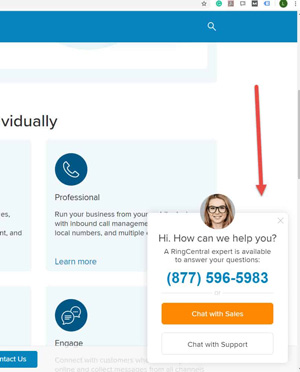
Some chat bots are A.I.-driven which reduces the time required of a live agent since basic preliminary questions can be answered by the A.I system. On the other hand, some companies prefer a live agent to always be available from the first chat interaction to the very end..
Live chat, like the other digital channels listed above, enables businesses to encourage customer engagement though digital channels that are easy and convenient to use.
Understanding the “Omni” in an Omni-Digital Strategy
While all these digital channels sound wonderful to use, it’s important to do so with an omni-digital strategy in mind.
Omni-digital is the same concept of an omni-channel strategy where all channels of communication with customers are visible through a single account profile. However, in this case an omni-digital strategy only includes channels that are digital.
For example, while fax and phone calls may be part of an overall omni-channel strategy, they would not fit into the classification of an omni-digital channel because they are not digital.
Having an omni-digital strategy helps improve customer service operations in many ways. Here are a few of those benefits:
- Reduce customer agent time over the phone
- Improve customer engagement with communication tools they’re familiar with
- Minimize or eliminate on-hold times
- Improve customer satisfaction by making it convenient for customers to do business
- Ability to gather detailed metrics for marketing and sales purposes
Once you determine which strategies you want to incorporate into your customer service, you’ll need to find a reliable cloud-based communications platform to view, manage and analyze these communication channels together.
What you don’t want to end up with is using a variety of disparate 3rd party tools that make it extremely difficult and near impossible for agents and managers to use.
As a RingCentral Premier Partner, we provide our customers with professional consultation in order to unify all their communication solutions together, all under one simple cloud-based platform.
Enjoy our infographic below, or feel free to Download a PDF copy for reference!
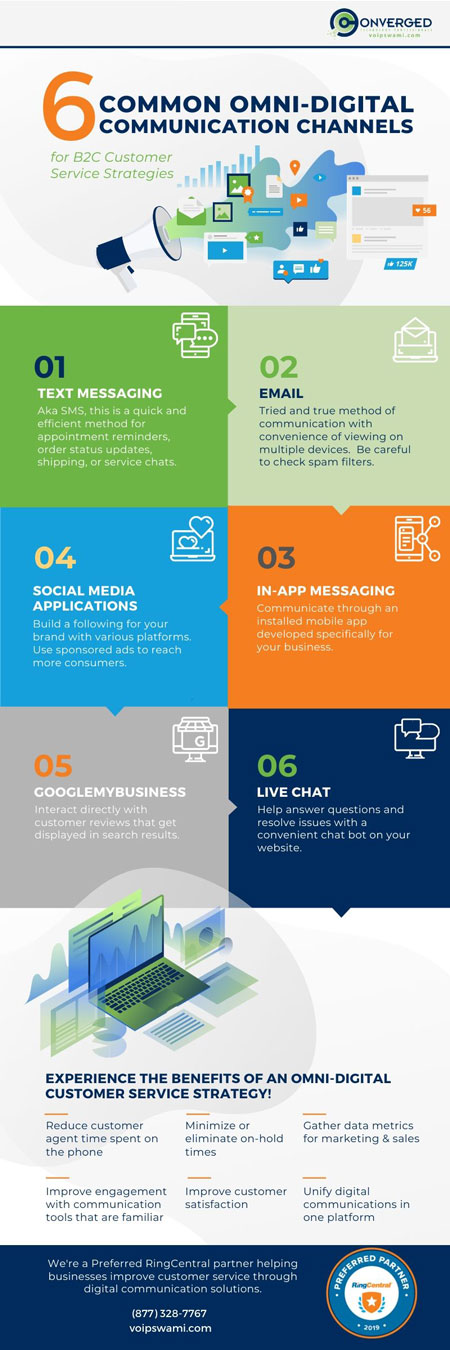
Other articles you may enjoy:
5 Trends Reshaping the Contact Center Market
The Future is Now in a Cloud-based Communications World - Is Your Business Ready?